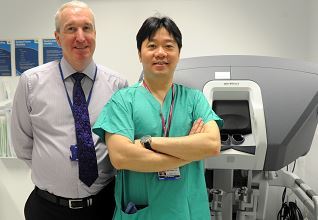A north-east man who lost his father and grandfather to prostate cancer has taken part in groundbreaking research into the treatment options available after being diagnosed himself.
Andrew Mackie was able to recognise the symptoms of the disease when he developed them due to his family history.
And when presented with the choices the Kemnay man decided to go for surgery.
While this was an easy decision for him due to his knowledge of the illness he feels other people in his situation need more information about the options on the table.
The 51-year-old explained how this led him to sign up to share his experience with researchers at Aberdeen University.
“I was asked to participate in the study after my localised cancer treatment.
“My dad was diagnosed at the age of 58 and died at 62.
“For most people who are diagnosed there is not a huge amount of information about the options such as waiting, having an operation, having radiotherapy or brachytherapy.
“People who are diagnosed can face a great deal of anxiety and so it’s good that they will be able to have the facts to empower them.
“Another positive outcome from this is that my daughter decided that as a result she wanted to become a nurse and is in her second year at Stirling University.”
The chief investigator into the research was Thomas Lam, a urological surgeon at Aberdeen Royal Infirmary and an honorary senior lecturer at Aberdeen University.
He explained what was unique about the research.
He said: “The problem we’ve had so far is that each option for treatment only focuses on the outcomes they aim for.
“Each has different priorities, and we want patients to be able to decide what the most important outcomes are for them and choose treatment that will meet their needs.
“The research ran for three years and involved 174 patients, mostly from the UK.
“I would like to thank our sponsors Cancer Research Aberdeen and North East Scotland for making this possible.
“They have also agreed to fund more research which will run for two years.”










